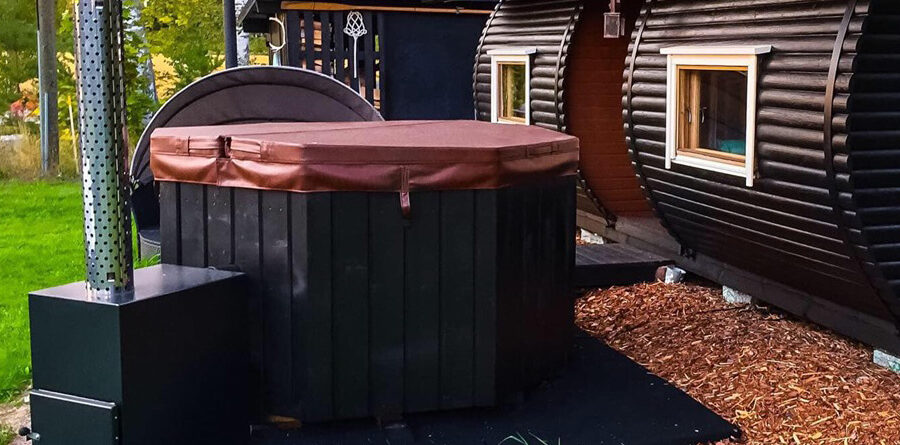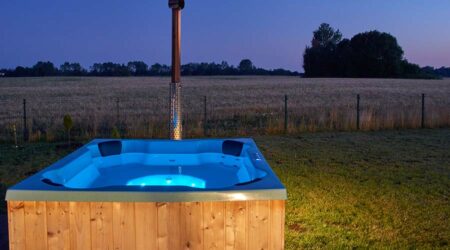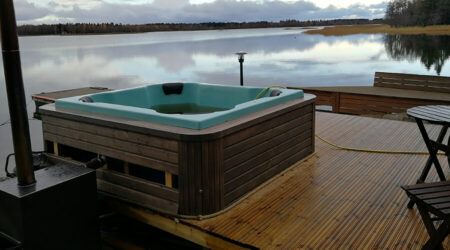The wood burning heater for the wooden hot tub
When we say a wood burning heater for a bath or barrels for a sauna, we mean the heart of the product. Which manufacturer should we give preference to and why?
The most common way to heat water in a sauna barrel is to use a wood burning heater. According to the method of application, the furnace can be internal or external. How these two options differ from each other, and which solution should be given preference, we will try to describe in this article.
The wood burning heater for the wooden hot tub with vertical loading (forced convection)
The internal wood burning heater for the wooden hot tub was invented for installation inside a wood burning heater and heated water through direct contact with the hot walls of the burning heater. As a rule, such a burning heater for the wooden hot tub is separated inside the tub by a protective wooden fence. The advantages of this design can only be attributed to the low cost and simplicity of the process of its implementation in relation to the external wood burning heater for the tub. The internal heaters for the tub are characterized by the following disadvantages:
- reduction of the internal useful volume of the tub;
- continuous penetration of impurities into the water from the heater and chimney;
- inconvenience of heater maintenance, difficulty of ash cleaning, etc.
External heater for the wooden hot tub with horizontal loading (free convection)
This is the classic and most practical option for installing a heater for the tub. The distance from the tub to the heater, as a rule, should be up to 40 cm so that the water circulates independently. Water heating is carried out by transferring heat from the heater to the water through an internal heat exchange process. The water in the furnace is fed to the bottom, and the heated water comes out of the heater in the upper part and is then fed into the tub. But depending on where the water is taken from the tub, and in which the water is returned to the tub, as well as what distance the heater for the tub has between the inlet and outlet, the difference in the water’s temperature in the tub can vary significantly!
The only drawback is the higher price compared to the internal heater, but this is justified by the positive aspects of using this type of heater:
- using 100% of the volume inside the tub;
- combustion products do not enter the water;
- easy to install, use, etc.
Besides the criteria of price and power of the heater, it is necessary to understand heating water in the tub, which affects not only the efficiency of the water heating process but also the pleasure of bathing with no additional tools, such as shovels, a circulation pump, etc. The consumer will pay attention to the implementation, which does not require additional effort, as well as the factor of the natural process of heating water, which ensures the most uniform heating of water inside the tub. Many low-efficiency wood-burning heaters are available on the market, which require more wood fuel, the energy generated in which flies into the pipe without heating water.




